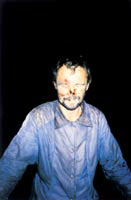Boris Mikhailov

Boris Mikhailov’s photographs are probably the most arresting in this year’s prize. By some stretch the oldest in the group, he also has the most interesting background. In 1969, he was working as an engineer in his native Ukraine and was chosen to film his factory. At the same time, he took nude photographs of his wife, was found out, and lost his job. Bravely, he decided to devote his life to photography. This series, called Case History, is one of the results of that decision. Because Mikhailov’s photographs in Case History take as their subject post-Cold War Ukraine, they are often seen in the tradition of social documentary. Certainly, they could be from the classic Magnum ethos of enlightening reportage that depicts social distress. He himself calls his subjects ‘casualties’, but his project is different and would disturb the traditional photojournalist – another element in the Citibank Prize’s distancing from press and documentary photography. For Mikhailov pays his ‘models’ and invites them to pose in certain ways, sometimes naked or semi-naked. But because his images document a group disadvantaged by geo-political forces, they carry a specific gravity that is similar to the work of the great chroniclers of the unfortunate, such as Robert Frank or Richard Avedon in his drifter series. Don’t forget that some of the great photographers of the 20th-century canon – including Brassai, Robert Doisneau and Joe Rosenthal, photographer of the Americans capturing Iwo Jima in the Pacific – have also upset certain critics because they allegedly posed photographs. Such issues still have the power to upset, and Mikhailov’s images are further helping to dissolve the boundaries between documentary and art photography that have beset the medium for as long as it has existed.
-
Post a comment




